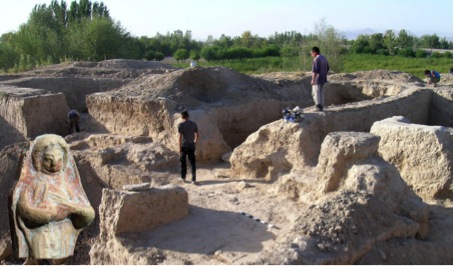
Cl. Claude Rapin
SEECHAC Conference May 21st 2013 by Claude Rapin, researcher at CNRS
Known as the birthplace of Tamerlane, Shahr-i Sabz is part of the group of major cities of Central Asia founded in the early Iron Age, in the last third of the 2nd millennium BC. Mentioned during the Achaemenid era under the name of Kesh or Nautaca, the city controlled the eastern part of the plain of the Kashka-darya, on the main road that connected Bactres to Samarkand trough the Sogdian Iron Gates. Located in front of the walls of the city, the site of Sangir-tepe is in direct contact with the geo-historical context. During the Achaemenid period, the site knows the status of sanctuary outside-the-walls. It first housed a monumental temple, which belongs to the first forms of Central Asian Zoroastrianism worship, that became later a sacred terrace. Abandoned shortly after the arrival of Alexander the Great, the site is reborn at the time of the Xionites (end of the 4th-middle of the 5th century AD.) in the form of a regional fortress. The funeral customs of the Xionites are represented by graves of nomadic tradition, but we discover that the masters of the Castle did not exclude the Zoroastrianism from their cultural environment, as evidenced by the fact that one of the towers housed also ossuaries.

